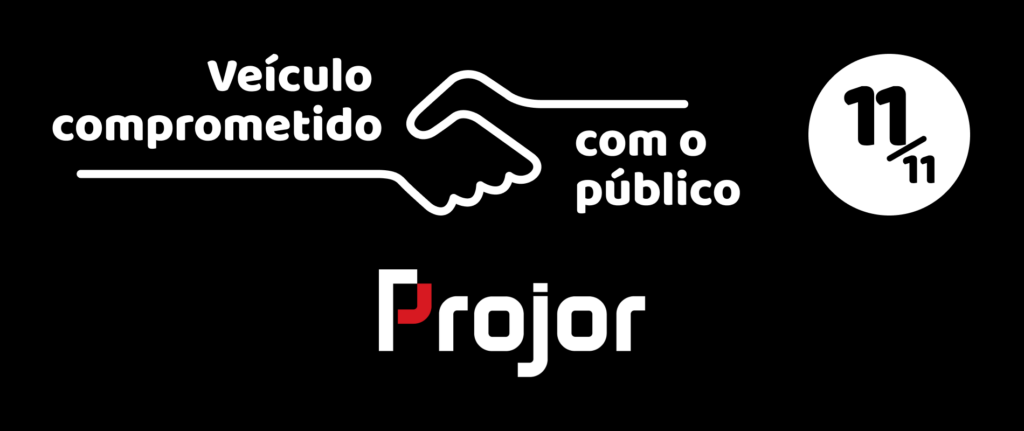Brazil has 5,390 active online news sites, according to the most recent edition of the News Atlas, which maps local journalism in the country. However, it’s not possible to know which are actually committed to their audience and, consequently, to the quality of the information they produce. A new initiative aims to add a layer of verification to the Atlas mapping, certifying Brazilian online news outlets based on transparency and credibility indicators.
The Public Commitment Indicators Program was announced in September by Projor – the Institute for the Development of Journalism, which has produced the News Atlas since 2017. Researchers will evaluate the compliance of news sites according to 11 indicators that, according to Projor, represent their commitment to the public.
Sérgio Lüdtke, president of Projor, told LatAm Journalism Review (LJR) that the new program responds to a need they’ve heard from journalists and researchers.
“For some time now, people have been asking us about the quality of content from the organizations listed in the Atlas, who does good journalism and who doesn't. It is not easy to evaluate content, and it is not the objective of the Atlas,” he said. “We have talked a lot about news deserts, where there is no journalism, but journalism is very precarious where it already is. We can’t just pay attention to where it isn’t without thinking about improving where it is.”
Using a resource made available by the Google News Initiative last year, Lüdtke and the team began working on the idea of evaluating the transparency and credibility of outlets they mapped.
“We came to the conclusion that the best thing would be to try to identify some indicators that demonstrate the outlets’ commitments to their audiences, to their communities of readers. We started researching and evaluating what these indicators were, what criteria we could use,” Lüdtke said.
They then determined 11 indicators of media commitment to audiences, which consist of the following information or characteristics of news websites:
Media that are evaluated and that have at least eight of these 11 indicators will receive a seal of compliance with the program, which can be included on their websites. This seal will have an associated link to the media outlet’s page on the News Atlas website, which will provide details about the indicators the media outlet complies with.

Example of seal that the Indicator Program will make available to media it finds to be compliant. (Courtesy: Projor).
According to the program regulations, the seal will be valid for one year, and Projor will review each site's compliance annually. The media outlet may also request a review of its adherence to the indicators at any time.
Projor has published a Best Practices Guide for Audience Engagement Indicators, which describes the indicators and offers suggestions for how news sites can implement them.
“If media outlets adopt these practices, we will see an evolution in transparency regarding their processes, which is a win for the online news ecosystem,” Lüdtke said.
The first evaluation phase of the program has already begun and aims to analyze online media affiliated with the Digital Journalism Association (Ajor), the National Newspaper Association (ANJ) and the National Association of Magazine Editors (Aner). At the end of November, the program plans to publish a survey with data on the first evaluations.
To date, Lüdtke said, the indicator with the lowest rate of compliance among the news sites evaluated is accessibility.
“Media outlets pay less attention to this point of accessibility, which is important. If we can get them to apply some changes that improve the site’s accessibility, it’s already a win for a very large portion of readers,” he said.
The Projor team consulted Ajor, ANJ and Aner to come up with the indicators and also the eligibility criteria for media to be evaluated by the program.
“A website that produces misinformation, for example, that mimics news content, could comply with every indicator, but we put in some obstacles,” Lüdtke said. “For example, if the outlet has been checked by an agency linked to the IFCN [International Fact-Checking Network] in the last two years, or if most of the content it publishes is not original, it cannot receive the seal.”
Although the indicators do not attest to the quality of the content on news sites, they demonstrate the commitment to the public and, indirectly, to the integrity of the information, Lüdtke said.
“The fact that a news outlet declares its principles, shows its processes, who is part of the team, its error correction policies, and makes this public, and offers the reader the possibility of demanding the outlet is compliant, is a very strong indication that the outlet has a commitment to the reader,” he said. “If you are committed to the reader and declare this, you are also committed to a minimum quality in the production of the content you present.”
Marcelo Rech, president of ANJ, told LJR that the association “supports all serious and independent initiatives that go towards identifying or certifying professional journalism”.
Rech, who helped to prepare the Indicator Program, said “it is increasingly necessary to differentiate what is professional journalism from other pseudo-informative materials that have been emerging in the last 15 years”.
“Journalism has been highly contested and attacked, often not only because of its errors and mistakes, but because there are many people imitating journalism to obtain political and economic advantages,” Rech said.
He said the initiative is important in the context of debates about technology platforms paying for journalism. According to Rech, one of the platforms' arguments for not accepting claims for payment is precisely the questioning of which organizations actually produce journalism
“It is a legitimate doubt and a question that demands from us, professional entities and movements, a certification, a clarification” about what peers consider professional journalism, he said.
Lüdtke also said that the Indicator Program can be a reference for funding institutions, advertisers and for defining public policies that benefit journalism.